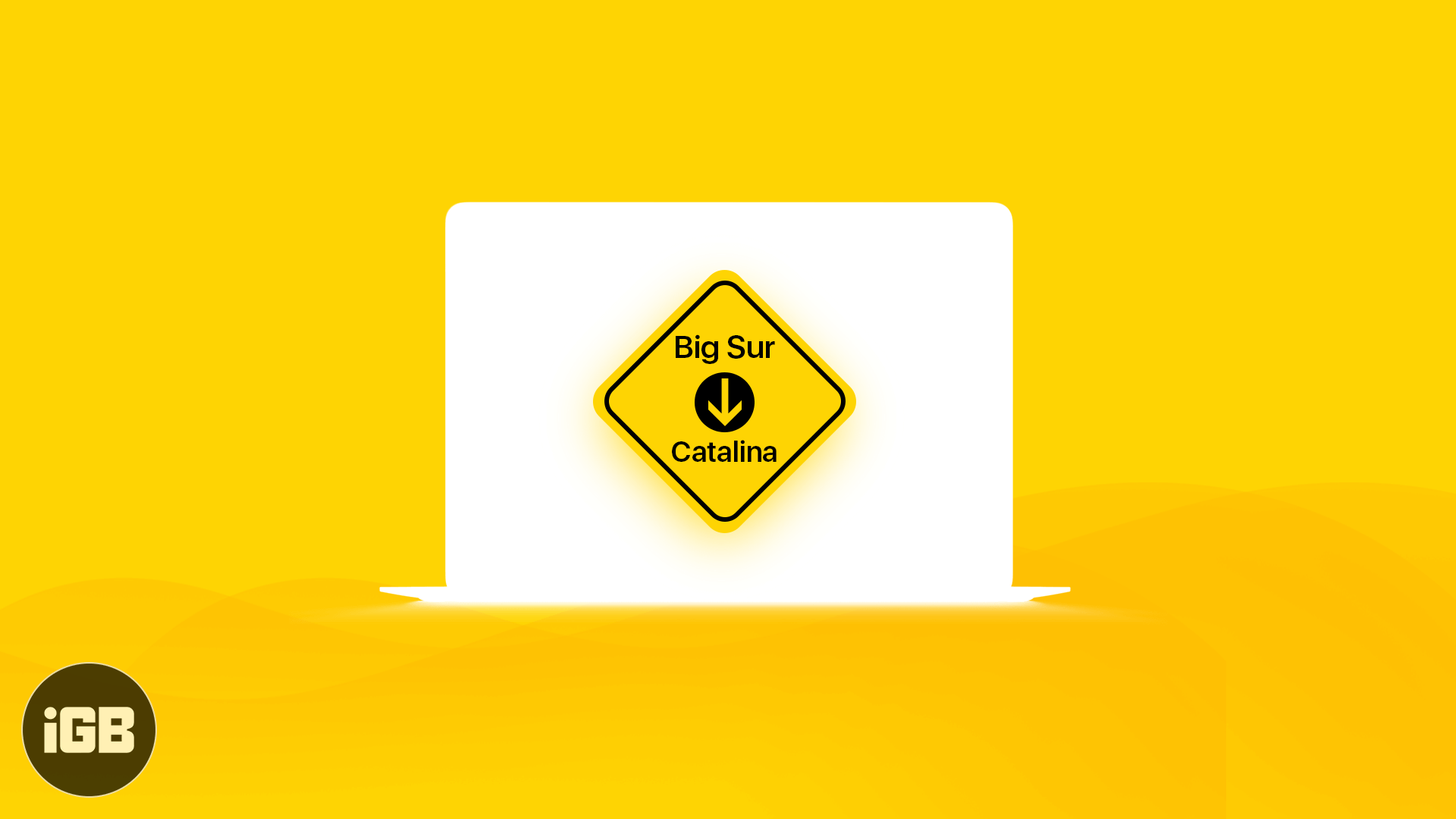macOS 11 Big Sur is still in the beta version. It is unstable and buggy. You may have installed it to check out the new features. But now, if you are looking to go back to macOS Catalina for any reason, it is possible. Let me show you how to downgrade from macOS Big Sur beta to Catalina.
Before You Begin:
- Understand The Whole Process: Downgrading involves Backup (optional but recommended) → Erasing macOS Big Sur → Installing macOS Catalina → Restoring from Time Machine backup (if you have a macOS Catalina backup)
- Two Methods: You can install macOS Catalina using the internet or a bootable macOS Catalina USB drive. For the first method, high-speed internet is recommended as it will download the full macOS (around 8+ GB). And for the second method also require the internet to download the OS. However, then you put it on a pen drive, and thus the actual installation is quick. Take a moment to see how to create a bootable macOS USB Drive.
- Ready To Begin?: If it is a MacBook, plug it to power as it requires significant energy, and the process is lengthy
How to Downgrade macOS Big Sur Beta to macOS Catalina
- Back up your Mac
- Erase macOS Big Sur from Mac Drive
- How to Reinstall macOS Catalina from Internet
- How to Reinstall macOS Catalina from USB Drive
- How to Restore Time Machine Backup
Back up your Mac
Before installing macOS Big Sur beta, did you make a Time Machine backup of your Mac running macOS Catalina? If yes, you can restore all files and data from it after downgrading. If not, you will have an internally new Mac.
If you made documents or downloaded files while your Mac was running Big Sur developer beta, you can copy them to an external drive or save to cloud services like Google Drive. Once you go back to Catalina, you can transfer them back. Or if it’s just photos or videos, you can transfer them to your iPhone as well. If you do not have Time Machine backup of macOS Catalina, try to copy as much personal files as you can.
Erase macOS Big Sur from Mac Drive
- Click on the Apple logo from the top left and click on Restart
- When your Mac restarts, immediately press and hold Command + R. Keep holding it until you see the Utilities menu
- Click on Disk Utility.
- Click on Continue. Next, click on Startup Disk. Most likely, it will be named Macintosh HD
- Click on Erase located at the top of the window
- If your device uses APFS, choose APFS from the format list. If your computer is using HFS+, be sure to choose Mac OS Extended (Journaled) from the format list
- Click on Erase.
- When the process ends, click on the red close button in the top-left of the window to quit the Disk Utility
Now, you can choose to download macOS Catalina from the internet. Or, if you had made a bootable macOS Catalina USB install drive, you can use this.
How to Reinstall macOS Catalina from Internet
- From macOS Utilities, click on Reinstall macOS. Click on Continue.
- Click on Continue. Agree to the terms of the software (if you do) and follow the on-screen instructions.
- Once the big download is complete, follow the simple installation process and the setup for macOS Catalina
How to Reinstall macOS Catalina from USB Drive
- Ensure that your Mac is connected to the internet. Then, connect the bootable drive (made with Catalina) to your Mac
- Click on the Apple menu in the top left corner of the screen and choose Restart from the drop-down menu
- Hold down the Option key while your Mac is restarting. Now, you will get the option to choose a startup disk. Choose your bootable drive with macOS Catalina from the startup disk options
- Next, macOS Catalina will start installing on your Mac. Hit Continue on the macOS installation window and then agree to the licensing terms and conditions
How to Restore Time Machine Backup
Now that you have reinstalled macOS Catalina using any of the two methods above, it is time to restore all the settings along with the files from the earlier macOS Catalina Time Machine backup.
Note: If you do not have a backup, you can skip this part and continue to use your Mac as new.
- Connect the Time Machine hard drive to your Mac
- Click on the Apple menu at the top left of your Mac screen and choose Restart.
- Now, immediately press and hold Command + R keys when you see the Apple logo or hear the sound. Make sure to hold down the keys till your Mac reboots. Then, choose the option to Restore from Time Machine Backup in the macOS Utilities selector and follow along
- Next, click on Continue again once you have checked out the essential info about restoring from a backup. After that, choose Backup source and proceed
- Make sure to select the most recent macOS Catalina backup on the drive and hit Continue one more time
That’s pretty much it! Now, sit tight and allow your Mac to restore from the Time Machine backup.
Signing off…
This is how you can downgrade from macOS Big Sur to Catalina. The method above works for any version of macOS. Next, you may be interested in knowing about how to speed up your Mac.
You may also like to read:
- Download macOS Big Sur Wallpapers
- Download iOS 14 Wallpapers
- How to add, delete, or erase APFS Volumes on macOS
🗣️ Our site is supported by our readers like you. When you purchase through our links, we earn a small commission. Read Disclaimer.

